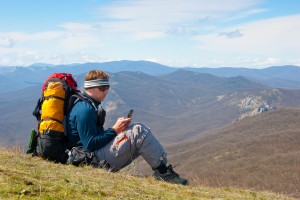 In the spirit of true confessions, I must admit that I don’t check my personal Facebook account very often and I rarely post anything. A recent check, however, surprised me and got me to thinking about trends in social media and the power of social networking. A good friend of mine shared a brief post that essentially read, “My husband is having a stroke. The ambulance just left the driveway and I am on my way to the hospital. Please pray for us.” I was taken aback by the fact that she would take the time to make a post when she clearly had more pressing priorities. As I thought about it more deeply in the coming days I realized that she was simply reaching out to her community in a time of need. Her community, in this case, was her collection of online friends, some of whom could have been across the street but others were across the country or across the world. This highlights the importance and power of social networking.
In the spirit of true confessions, I must admit that I don’t check my personal Facebook account very often and I rarely post anything. A recent check, however, surprised me and got me to thinking about trends in social media and the power of social networking. A good friend of mine shared a brief post that essentially read, “My husband is having a stroke. The ambulance just left the driveway and I am on my way to the hospital. Please pray for us.” I was taken aback by the fact that she would take the time to make a post when she clearly had more pressing priorities. As I thought about it more deeply in the coming days I realized that she was simply reaching out to her community in a time of need. Her community, in this case, was her collection of online friends, some of whom could have been across the street but others were across the country or across the world. This highlights the importance and power of social networking.
Trends
As little as 150 years ago, we were not a mobile society. The transcontinental railroad was completed in 1869, the first Model T Ford came off the assembly line in 1908, and the first commercial airline flight in America came in 1914 although affordable air travel did not come until after World War II. Today, we are such a mobile society that we have friends, family, and associates strung around the country and around the world. One of the ways we keep track of them all is through social sites such as Facebook, Twitter, or LinkedIn.
Social Media Survey
In a 2011 survey on social media habits by the Lares Institute, it showed that we are increasing our use of social media and connecting with old and new friends. According to the survey “55 percent of respondents had ‘friends’ from social media they had not actually met, and 77 percent of those respondents had five or more friends they had not met, with 21 percent reporting that they had fifty or more friends that they had not met.” Our networks are larger than ever.
In Times of Trouble
The lines are blurring between our physical and online networks. Part of the power of a distributed social network is that we can put out a plea for help and even if someone cannot help us directly, someone may know someone who can assist us. Combine this with mobile technology that allows us to send and receive updates immediately and you have a very powerful, very flexible network of friends that you can call upon for help or to share good news. It is real, it is immediate, and people often want to help other people in need. This is the power of a distributed social network.
Thoughts
In times of need, do you reach out to your physical network or your virtual network? Which one is faster to respond? Are they really one and the same? What do you think is the power of a social network? Let me know your thoughts.
 About Kelly Brown
About Kelly Brown
Kelly Brown is an IT professional, adjunct faculty for the University of Oregon, and academic director of the UO Applied Information Management Master’s Degree Program. He writes about IT topics that keep him up at night.

